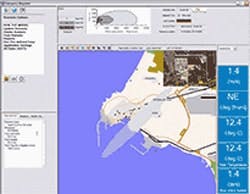Combustion Analysis Model Can Help Manage Industrial Fires
Safer Systems introduced the Combustion Analysis Model (CAM) at the NPRA 2010 National Safety Conference & Exhibition. CAM is designed to analyze and help manage industrial or transportation-related fire events; analyze any chemical fire, including a tank-top, pool, stack or jet, and post-dispersion fires; provide crucial information regarding the products of combustion ; and determine the downwind dispersion of combustion products, airborne particulate, hazardous materials not burned in the fire and soot deposition.
CAM works in conjunction with any of Safer Systems' chemical emergency management solutions -- Real-Time, Homeland Responder or Hazmat Responder. Providing a complete picture of the impact of the hazards associated with fires, toxic smoke and particulates allows first responders, corporate personnel and government agencies to make more informed decisions regarding a fire event and its consequences to a facility/location, the environment and local communities that stand in the path of the smoke and its fallout.
Those decisions can include evacuation and shelter in-place actions, evaluating possible short- and long-term health impacts and environmental consequences and determining how to address possible damage claims and litigation.
CAM is suited for petrochemical and refining environments, including refineries, sour gas and storage terminals/tank farms.





